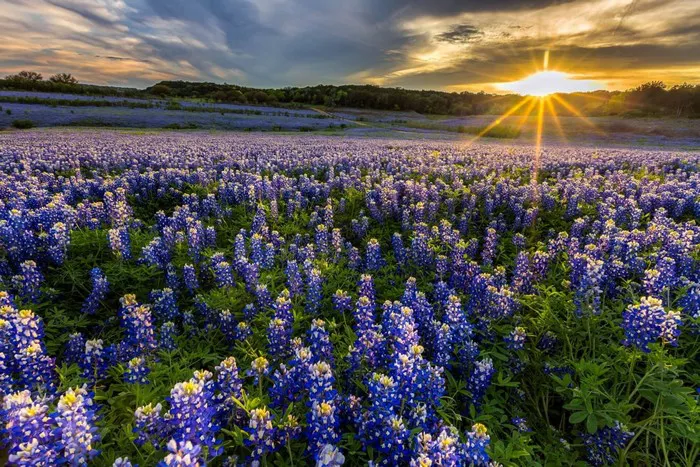Spring in Texas heralds the annual spectacle of bluebonnets painting the landscape with their vibrant hues, adorning roadways, parks, and countryside with a carpet of blue.
As the iconic state flower begins its bloom, a reminder resonates across some parks urging visitors to treat the blooming flora with reverence. McKinney Falls State Park recently took to Facebook, imploring visitors to tread carefully and stay on designated pathways when traversing its renowned bluebonnet meadow.
“Remember that the impact caused by laying and taking pictures elsewhere tramples the flowers and ruins the experience for others,” the post cautions.
The post elicited over 1,700 reactions, with commentators echoing the sentiment and extolling the beauty of the park’s violet-blue spectacle.
For those undeterred by common courtesy, a stark reminder comes in the form of rattlesnakes. Social media buzz has highlighted the reptiles’ affinity for bluebonnet patches, with some users sharing encounters with the creatures.
Appreciating Texas’s breathtaking wildflower display doesn’t necessitate lying amidst the blooms. Texas Parks and Wildlife suggests several alternative locations for witnessing the floral extravaganza, including LBJ State Park, Inks Lake State Park, Pedernales Fall State Park, Palmetto State Park, or Enchanted Rock State Park Natural Area.
Texans keen to support conservation efforts can opt for bluebonnet-themed license plates, the proceeds of which benefit all 89 Texas state parks. Priced at $30 annually, these white plates feature an illustration of the state flower.
This wildflower season is anticipated to be a “banner year of blooms,” as per experts from the Austin-based Lady Bird Johnson Wildflower Center.
“On a scale from one to 10, this year looks like it could be an eight, for bluebonnets in particular, if not even better,” remarked Andrea DeLong-Amaya, the center’s director of horticulture, in a news release.
DeLong-Amaya attributes this year’s abundant blooms to well-distributed rainfall during the fall and winter. Despite challenges posed by last summer’s drought, it’s believed to have further bolstered this year’s wildflower display.
“When we have extreme weather the prior summer, we see some plant mortality, which reduces competition in the soil and creates space for spring blooming wildflowers,” added Matt O’Toole, the center’s director of land management, in the release.


